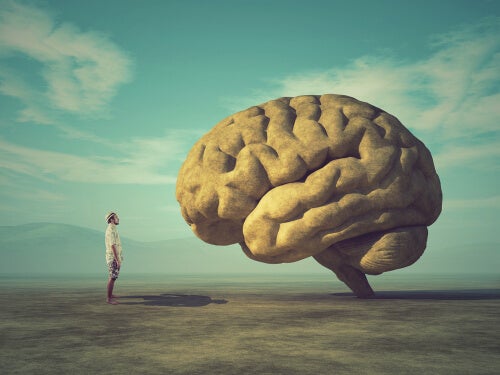Some people claim that we’re going through a time when our ethics and morals are at a turning point. Perhaps it’s the fact that it’s a time dominated by so many changes, crises, and challenges that many of our cornerstones are starting to fail. One thing that’s certain is that, when things go wrong, we’re not always able to unite for the common good.
In fact, in an increasingly polarized society, it’s extremely difficult to reach agreements. Moreover, the world is moving ever faster and it’s really difficult to stop to reflect for a moment and decide where we want to go. Many say that this isn’t a new dilemma and that humanity has always behaved in the same way in similar circumstances.
For example, the psychologist, Lawrence Kohlberg (1927-1987) who specialized in moral reasoning, gave a warning in this regard. According to his studies, only a small percentage of adults do the right thing because it’s the morally right thing to do. The rest, so to speak, only do what’s ethical if they’re observed or pressured by third parties. When they’re alone, they do what benefits them.
This fact is somewhat devastating because we’d all like to think that, printed in our interior, are the basic rules of civility, ethics, justice, and moral sense. However, apparently, these are dimensions that not all of us develop. To assess whether people have reached this high point of moral development, Kohlberg posed Heinz’s famous moral dilemma.
We could all improve our moral sense if we greatly strengthened our empathy.
The Heinz dilemma and moral states
One question that has always been of interest to the fields of psychology and philosophy is how we develop our sense of ethics and morality. Do they always come from educational or family influences? Or does society itself have a decisive role in understanding what’s right and wrong? It’s a challenging question.
Jean Piaget was one of the first figures to address moral development. He did it from a cognitive perspective. Later, Lawrence Kohlberg, a young psychologist with a Ph.D. in philosophy from Harvard University, took over. We could say that he dedicated his entire career to that goal, until, sadly, he took his own life due to deep depression.
His legacy, contained in works such as The Philosophy of Moral Development and Essays on Moral Development (1981), continues to be studied and reviewed today. Kohlberg’s purpose was none other than to create a fairer society through education. For this, he proposed a didactic approach based on Socratic morality.
Dialectics and questioning were, for him, the basic pillars for fostering in children a more critical, reflective, and open vision of life. In addition, he suggested that proposals such as the Heinz dilemma should be used. These were little stories that encouraged analysis, questioning, and the obligation to position ourselves from an ethical and moral perspective.
Did Mr. Heinz do the right thing?
“Mr. Heinz’s wife is seriously ill: she has an extremely aggressive cancer. Her life hangs by a thread and there’s only one medicine that could save her life
At one point, and in the midst of despair, Mr. Heinz makes a decision. The drug costs $2,000, so his only option is to borrow the money from his friend and relatives. He tries, but only gets half, $1,000.
Dejected, he approaches the pharmaceutical laboratory that designed the medicine that could save his beloved wife. He explains his situation to them and asks them to, for humanity’s sake, sell it cheaper or allow him to pay the remainder of the money later when he can raise the money. They refuse.
The pharmacist tells him that they discovered the formula and that now his goal is to get rich with it. Mr. Heinz leaves without saying anything, but with a clear plan in mind. He’ll return later and steal the drug that can save his wife”.
Do you think Mr Heinz behaved well? If so, why. try to develop your reasoning.

Answers and assessment of the dilemma
Lawrence Kohlberg believed that the moral development of an individual starts from their cognitive evolution and from the social experiences they’ve gone through. As is evident, children progress more slowly based on their psychobiological development and the situations to which they’re exposed. However, what about adults?
Kohlberg believed that little more than 15 percent of the population reaches the last level of moral development, which he defined as the post-conventional stage. Although it’s true that his theory was later criticized, according to him, to reach that higher state, we need good abstract reasoning to attain solid values.
How did you assess the famous Heinz dilemma? According to Kohlberg, there are three differnet levels from which the dilemma can be approached:
Preconventional level
This first phase of moral development is based on two stages. In the first, there’s blind obedience to the rules and fear of punishment. In the second stage, the child focuses on satisfying their individual needs. Indeed, the answers that fit the Heinz dilemma in the preconventional phase follow a clearly childish pattern:
- He shouldn’t steal the drug. It’s wrong to do so and he’ll go to jail for breaking the law.
- He must steal the drug because, if his wife dies, he’ll be left alone.
- He shouldn’t steal the drug because jail is a horrible place and he’ll suffer.
Conventional level
This is the level that, according to Kohlberg, most of us are at. At this stage of moral development, we accept social rules based on whether they seem ethical, logical, and fair to us.
However, and here comes the nuance, in the conventional phase we value the rules based on how we’ve been educated and what society transmits to us. We lack, so to speak, a certain critical and independent vision.
The answers we’d tend to give would be as follows:
- What he’s done is understandable and acceptable. His wife will be saved, but he’ll have to go to jail because he’s committed a crime. After all, those who break the law must be punished, otherwise, the law of the jungle would apply.
- What he’s done is understandable. He loves his wife and would do anything for her. It is lawful.
The post-conventional level
Reaching this high point of moral development requires a more abstract, critical approach, clinging to our own values, without external or cultural conventions. At this point, we understand that a society must have laws, but we believe that these laws must be adjusted to the real needs of people.
This implies that, in many cases, the values that an individual defends don’t always fit with the justice and moral principles established in their social environment. In fact, the answers that are usually given, form a post-conventional level are the following:
- It makes no sense to prioritize respect for property over respect for life itself. We should all be able to fight to defend a superior value that isn’t selfish.
- We all have the right to defend life beyond those laws that prioritize the right to economic benefit such as that of pharmaceutical companies.
To conclude, we can’t deny that the Heinz dilemma is an interesting exercise to pose to children throughout their lives. Making them think and project themselves into other people’s situations forces them to make ethical and moral judgments. Moreover, it encourages them to develop empathy and critical thinking. It’s worth bearing in mind.
The post Kohlberg’s Heinz Dilemma: The Evaluation of Moral Reasoning appeared first on Exploring your mind.



















Comments